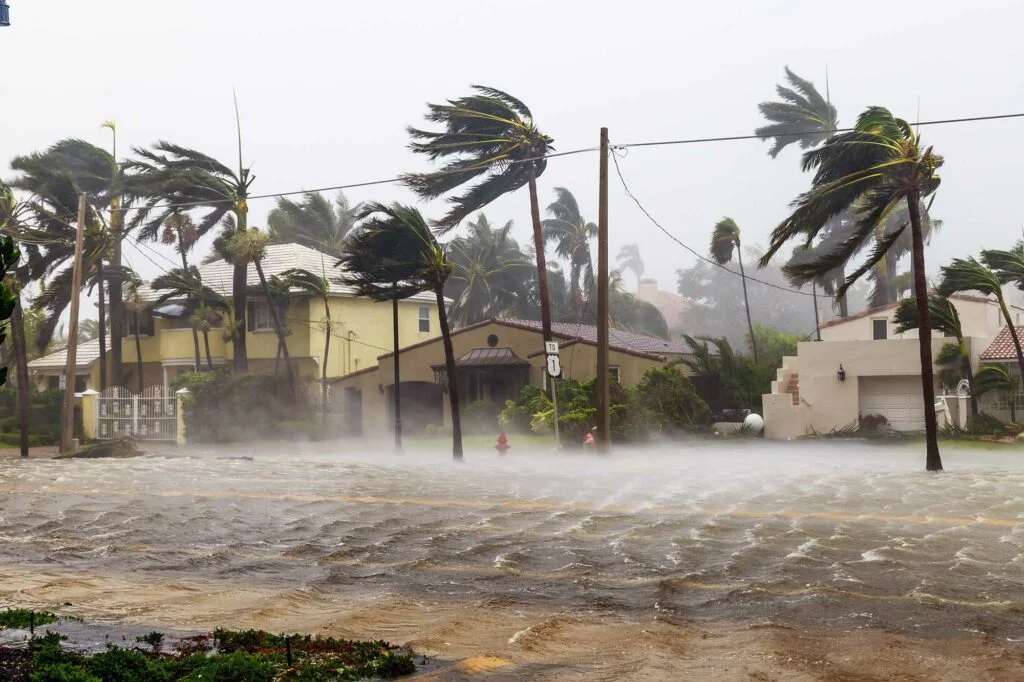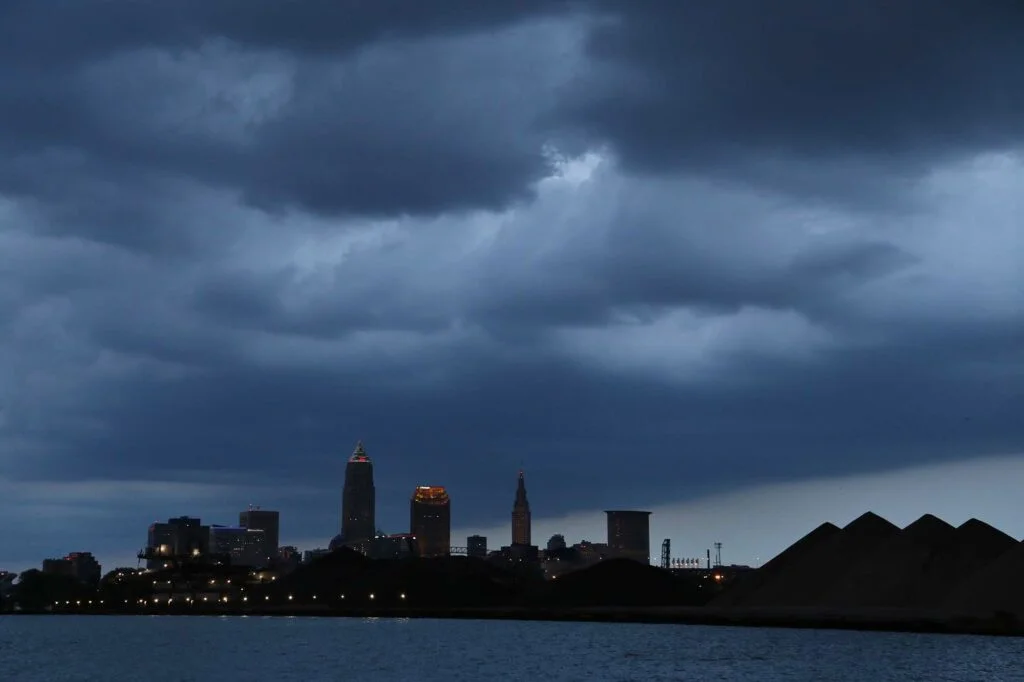Have you ever been stuck inside on a rainy day? It can be frustrating to stay inside when it is raining (although you could keep track of how much rain you’re getting with a weather station!). If you’re in the rainiest city in the US, it’s far more likely to be raining or snowing outside than sunny.
You might be surprised: Seattle isn’t the rainiest city in the US, and we’ll explain why later. The award for the rainiest city in the US goes to two New York cities, Rochester and Buffalo. With 167 days of rain, almost half the year sees measurable precipitation. We used precipitation data from National Oceanic and Atmospheric Administration’s National Climatic Data Center to determine our list and limited the list to large US cities.
What city has the most rainy days?
In order, the rainiest cities in the U.S. by number of days, defined as more than 0.01″ per day, are:
- Rochester, New York: 167 days with rain
- Buffalo, New York: 167 days
- Portland, Oregon: 164 days
- Cleveland, Ohio: 155 days
- Pittsburgh, Pennsylvania: 151 days
- Seattle, Washington: 149 days
- Columbus, Ohio: 139 days
- Cincinnati, Ohio: 137 days
- Miami, Florida: 135 days
- Detroit, Michigan: 135 days
We should note that the number of rainy days doesn’t necessarily equate to the most precipitation. If you are looking for the rainiest cities in the U.S. by inches, Mobile, Alabama, which sees 67 inches of rain annually, would take the top spot. Along with New Orleans and the Florida Panhandle, Mobile sees so much rain because it is in a prime location — the Gulf Coast — for landfalling tropical systems. The city remains wet during winter, while southern Florida tends to dry out. However, the rain comes in shorter periods and isn’t spread across many days like in other cities.
Why Rochester, New York, and Buffalo Are the Rainiest Cities
Rochester and Buffalo are two of the rainiest cities in the US due to their proximity to Lake Ontario and the Great Lakes. The lake effect brings a ton of moisture into these areas, which leads to more precipitation. While the average annual rainfall in these cities is only around 30-40 inches yearly, it is spread throughout the year.
They also have a more extended rainy season than Seattle. While Seattle has more rain in the winter, Rochester and Buffalo experience rainy seasons during spring and fall with frequent weather systems. Heavy wintertime lake-effect snow adds to the precipitation totals. Both cities average around 90 inches of snow yearly, making them two of the US’ snowiest major cities.
Is Seattle the Rainiest City? Nope.

Seattle’s weather conditions are influenced by the rain shadow effect, proximity to water, and wind patterns.
Seattle is located in an area with little precipitation because it is on one side of a mountain range that blocks rainfall from reaching the area. The Olympic Mountains block about half of all incoming moisture from the Pacific Ocean from reaching Seattle.
Seattle also experiences a “rain shadow” effect due to its proximity to water and prevailing winds, bringing in more moisture-rich air from over the ocean rather than off the land.
Wind patterns also drive Seattle’s shifts between wetter and drier weather. During the winter, winds flow in from an easterly direction. When they hit land near Seattle, these moist air currents bring water vapor over the ocean and drop it as precipitation. During the summer months, these westerly-bringing wind currents tend to not transport much moisture for Washington State and the interior Pacific Northwest due to high-pressure systems, which lead to less rain during the summer in Seattle.
Experience the fascinating world of weather with the second edition of Weather Watch: An Introduction to America's Weather and Climate. This book doesn't just explain weather and climate concepts—it brings them to life.
Weather Watch is perfect for teenagers and adults who wish to deepen their understanding of the dynamic world of meteorology. Simplifying the complex, this book breaks down the science of weather into smaller, easily digestible concepts, allowing you to build on your knowledge with each chapter.
Here's what to expect:
- Detailed insights on clouds, pressure and wind, reading weather maps, hurricanes, and tropical storms
- Enlightening discussion on climate change
- Essential guidance on purchasing a weather station
- Critical information on severe weather and tornadoes
- Learning how to forecast the weather yourself
This second edition comes completely reformatted with over 30 pages of new content, including advanced weather map analysis and space weather. It's more visually appealing with additional illustrations and graphics. Each chapter now ends with handy links for more in-depth learning, and sprinkled throughout the book are captivating American weather events, serving as real-life illustrations of introduced concepts.
Why Miami, Florida Gets More Rain in Summer

If you live in Florida, you might think that summertime thunderstorms that seemingly happen daily might make coastal cities like Miami the rainiest city in the US. But sunshine, especially in the winter, is much more common than you think. Miami is rainiest in the summer and drier in the winter, opposite Seattle. There are reasons why this happens.
The city has a subtropical climate with a wet season between May and October when it experiences its highest precipitation. During this time, hot, humid tropical air masses are pushed northward by easterly winds from the tropical Atlantic, precipitating as they push up against the Florida eastern coast. Low systems such as hurricanes and tropical storms also add to rainfall totals during the summer.
However, the city has much less rainfall in the winter as high-pressure systems are firmly in control, steering storms away from the city and the rest of the state.
Why Ohio is As Wet As Seattle (And More So)

Columbus, Cleveland, and Cincinnati have just about as many days with measurable precipitation as Seattle, even though they are considerably inland — making them surprising entries in the list of the wettest cities. So why does this happen? The influence of Great Lakes, the world’s most extensive freshwater lake system, plays a significant role in weather patterns.
These two cities are very close to the Great Lakes and receive moisture from these significant bodies of water throughout most seasons. This is especially true in spring and fall when cold fronts drop southward off Canada’s Hudson Bay, bringing loads of precipitation that soaks both Columbus and Cincinnati. Cleveland also sits on the shore of Lake Erie itself, giving it a source of moisture that other inland cities away from the East and West Coast do not.
They also get snowfall during winter when low-pressure systems bring Arctic air masses southward into the region. While this doesn’t happen often, it can be exacerbated when low-pressure systems sit over or near Lake Erie, one of the five Great Lakes close to both cities.
While many other cities, especially across the Northwest and Northeastern US, also see well over 100 days with measurable precipitation, they didn’t quite make our list. Have no fear, though. The sun will eventually come out!



